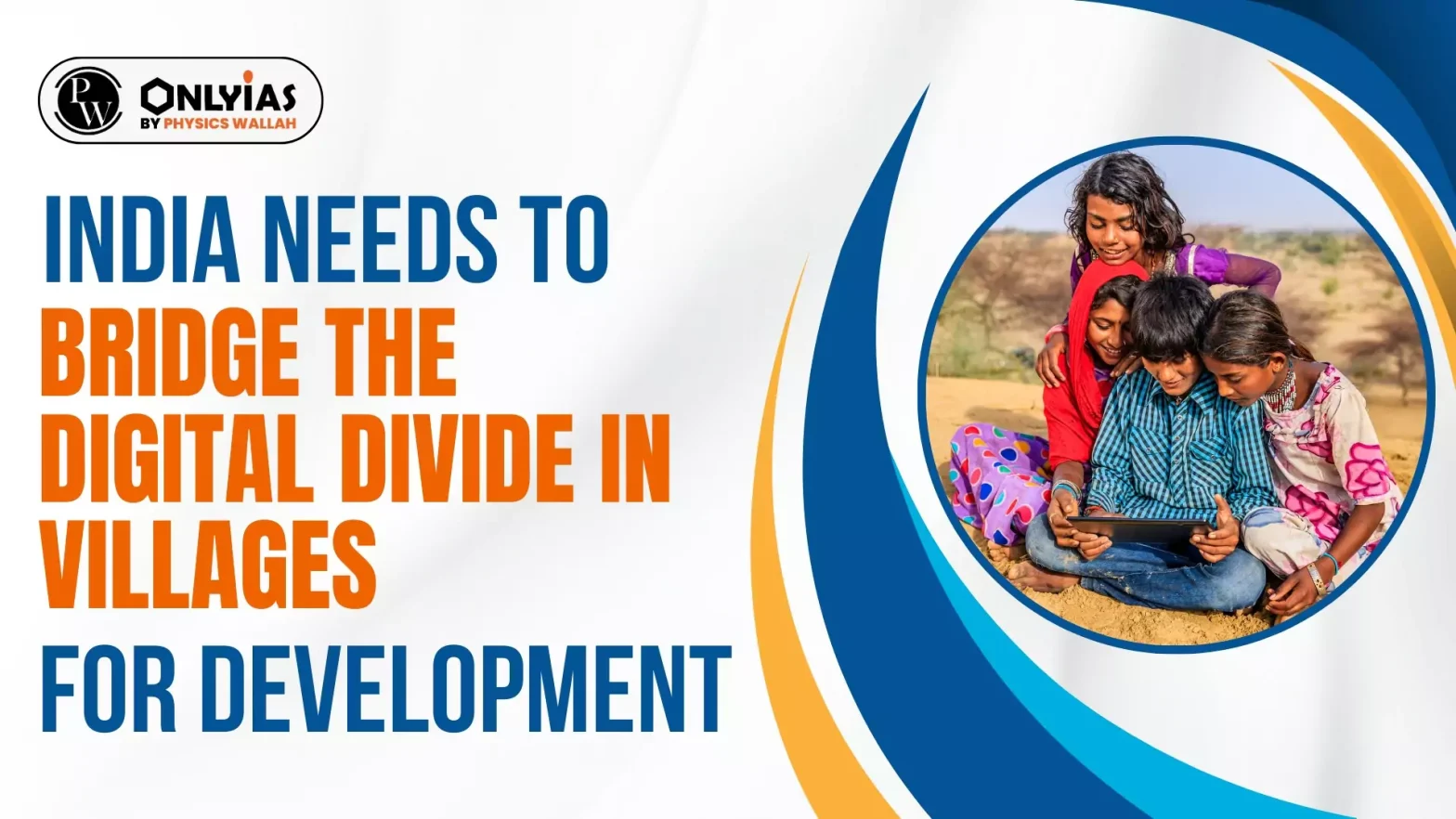The digital divide refers to the gap in access to and usage of technology. While some individuals have access to the latest technologies, others lack even basic information or resources. In India, this divide is particularly stark. Urban areas, which constitute just 3% of the country, contribute nearly 70% of India’s GDP, whereas more than 900 million citizens in rural areas remain underserved and lack basic facilities such as access to banking, investment, and credit.
Key Areas for Enhancing Digital Access in Rural Areas
- Infrastructure Shortcomings: Rural areas often suffer from inadequate infrastructure, making it difficult to establish reliable internet connections. For example, in many parts of Bihar, electricity is unstable, which directly impacts internet connectivity. Addressing these shortcomings is crucial for enabling digital access in villages.
- Enhancing Access: Even when digital infrastructure is available, access to devices remains a significant barrier. Smartphones and computers, although relatively affordable, are still expensive for many in rural areas. Government schemes, such as Madhya Pradesh’s free smartphone yojana for students, are essential to bridge this gap by providing affordable or free devices to those in need.
- Awareness: Digital literacy is another critical area that needs attention. Many rural residents are unaware of how to effectively use technology. Initiatives like Kerala’s Akshaya program, which has significantly boosted digital literacy, serve as excellent examples. As a result of such programs, Kerala is now among the top states in digital literacy.
- Creating Economic Opportunities: Technology should also be a tool for economic empowerment. For instance, Rajasthan’s e-Mitra kiosks allow residents to pay bills and obtain certificates locally, thereby increasing local employment and income opportunities. These kiosks not only make services accessible but also create jobs, contributing to the economic development of rural areas.
Enroll now for UPSC Online Classes
Solutions to Bridge the Digital Divide in Rural India
- Innovative Distribution Models: Assisted Accessibility: To bridge the digital divide, India needs innovative distribution models that simplify access to advanced technology and leverage the trust of local communities. The concept of assisted accessibility can play a pivotal role here. Local retailers, who already function as business correspondents (BCs) for basic banking services, can be empowered to serve as nerve centres for financial accessibility in rural areas. By enhancing their capacity and enabling them to offer advanced financial services like credit, insurance, and investments, these local networks can ensure that last-mile citizens have access to crucial financial tools. These services should be distributed in a way that adheres to the principles of availability, applicability, acceptability, and affordability. This model has seen success in some villages and now needs to be scaled up across the country.
- Tailored Services for Rural Channels: Services provided through these rural channels must be specifically designed to meet the unique needs of rural populations, rather than simply adapting urban solutions. For example, while urban areas might benefit from comprehensive insurance plans, rural regions would be better served by microfinance and microinsurance options.
- Successful examples: This approach has already been demonstrated successfully by telecom companies and FMCGs through their sachet packaging strategies, which cater to the smaller budgets and consumption patterns of rural consumers.
- Similarly, banks and non-banking financial companies are now collaborating with corporate BCs to introduce innovative products like microcredit, microinsurance, and goal-based flexible savings plans. For example, SBI’s YONO platform offers personalised financial offers. This can be tailored to the specific needs of rural customers.
- Jan Nivesh, Jan Suraksha, and Jan Credit: Initiatives like the Jan Dhan Yojana have shown the potential for large-scale inclusion efforts, and similar strategies are necessary to introduce and popularise programs like Jan Nivesh (People’s Investment), Jan Suraksha (People’s Protection), and Jan Credit (People’s Credit).
- These initiatives can only be successful if they become part of a broader movement driven by increasing demand for credit, loans, and other financial services essential for full economic inclusion.
- Bringing Villages Online: The Open Network for Digital Commerce (ONDC) has the potential to bridge the digital divide by bringing rural communities online. By enabling small retailers in villages to sell their products through digital platforms, ONDC can significantly expand their business opportunities and increase market access. This digital inclusion is already evident in the mutual fund industry, where more than 400,000 new portfolios are being created each month from Tier-II and Tier-III cities. This burgeoning trend highlights the increasing financial engagement of rural populations and underscores the transformative impact of digital platforms on rural economic participation.
- Content in Local Languages: To make digital tools and resources accessible to a broader rural audience, it’s crucial to provide content in local languages.
- Companies like Google are leading the way by offering services in nine Indian languages, which ensures that language barriers do not prevent rural populations from engaging with digital platforms.
- Cybersecurity Awareness: As more rural residents come online, it’s important to raise awareness about cybersecurity. Educating people about online safety, fraud prevention, and secure financial transactions will protect them as they increasingly use digital services. This is especially critical as financial inclusion expands, ensuring that villagers can trust and safely use digital platforms.
- Expanding 5G and Telemedicine: The expansion of 5G technology into every village is essential for improving connectivity and enabling advanced services like telemedicine. With better internet access, even the most remote areas can benefit from healthcare services delivered through digital platforms, making medical care more accessible and timely.
- Blockchain Technology for Secure Transactions: Blockchain technology can play a key role in securing financial transactions, especially in rural areas where trust in digital financial systems needs to be established. By using blockchain to enhance the security and transparency of transactions, villagers can be more confident in using digital financial services, fostering greater adoption and trust in the digital economy.
Check Out UPSC NCERT Textbooks From PW Store
Conclusion
Bridging the digital divide in India’s rural areas is crucial for ensuring inclusive development and empowering millions of citizens. By addressing infrastructure shortcomings, enhancing access to devices, raising digital literacy, and creating economic opportunities, India can significantly narrow the gap between urban and rural areas. This approach is essential for realising the vision of a “Viksit Bharat,” where every citizen, regardless of location, is included in the nation’s progress and prosperity.
![]() 10 Sep 2024
10 Sep 2024

